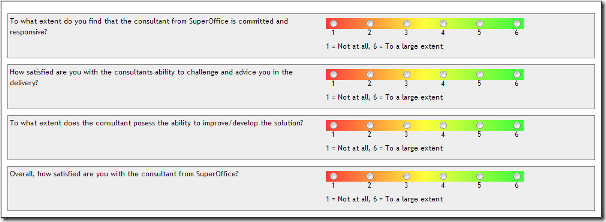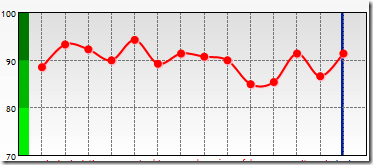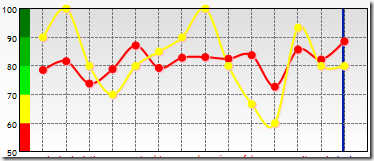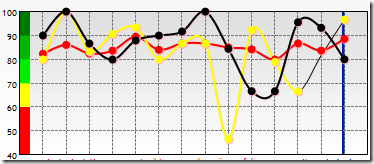These words were uttered by the famous “business thinker” and management consultant Peter Drucker. But what does it mean? And how do you apply it to the parts of your business that’s not traditionally measured?
It’s easy to see that sales people can be measured by how much they sell, marketing by how many leads they create, in-house sales by how many leads they convert to to sales, telemarketing by how many phone calls they make etc.
It’s easy because you measure quantity!
But how do you measure quality? What is excellent customer service? What is good technical support? What differentiates a great consultant from a good one?
To find out whether you as a company deliver the necessary quality, you have to ask your customers. Continuously. Take their answers seriously. Then improve.
Let me tell you how we did this for our services/consultancy area.
1. Start by defining quality
For each business area you want to truly control and improve, you need to define what equals quality within this area.
For example; if you want to make sure that you have the best consultants for implementing your software, you need to define the success-criteria for achieving this. You also have to make sure that you do this from the customers point of view!
This is no accurate science and may very well be a difficult exercise. We found it helped to ask ourselves “what would make me as a customer really appreciate this consultant and his/hers services?”.
Our answers/quality criteria touched on the following areas; commitment and responsiveness, ability to challenge and advice and the ability to improve and develop.
2. Formulate the questions
Based on the quality definition from above you should move on to formulate the questions you want to ask your customers.
Make sure they are open questions (not yes/no) and that you don’t have too many of them (the worst thing is to see “you have completed 20%” after having answered 4-5 questions…). Also, using a scale might make it easier for you to document trends and see improvement over time (make sure to use even numbers, as you want the customer to take a stand).
We ended up with four straight forward questions:
- To what extent do you find that the consultant from SuperOffice is committed and responsive?
- How satisfied are you with the consultants ability to challenge and advise you in the delivery?
- To what extent does the consultant possess the ability to improve/develop the solution?
- Overall, how satisfied are you with the consultant from SuperOffice?
3. Automate the process
Unless you want to hire a person to handle all questionnaires and the responses, it’s recommended that you use an automated survey tool for this (we use GAP Vision). We have made this real easy for ourselves; each time a consultant ticks the “completed” box in the SuperOffice activity, an email is sent to the customer with the survey (a 30 day quarantine prevents the same customer from receiving the survey more than once).
4. Measure and improve
As the results come back we are left with really valuable feedback; both in the form of scores and comments.
a. For each of our core values/questions we can see the trend over time, we can also see whether the score is within our accepted range. If it’s not we can take the necessary steps to improve it.
b. Each consultant is allowed to see how he or she is doing, and can also compare themselves towards the average (first picture). Management can see how all consultants compare (second picture). And at corporate level they can compare the different subsidiaries. This is invaluable input on improvement areas that you can coach your consultants on. What makes consultant A continuously score high on value B, and how can he/we teach the others the same? We have also implemented bonuses based on high scores.
c. Finally we get a lot of valuable input from the comments that customers take the time to give us (always make sure you include an open comment field in your survey). We make it a rule to quote the positive ones in internal events, and call the most negative ones to proactively improve the customer relationship.






